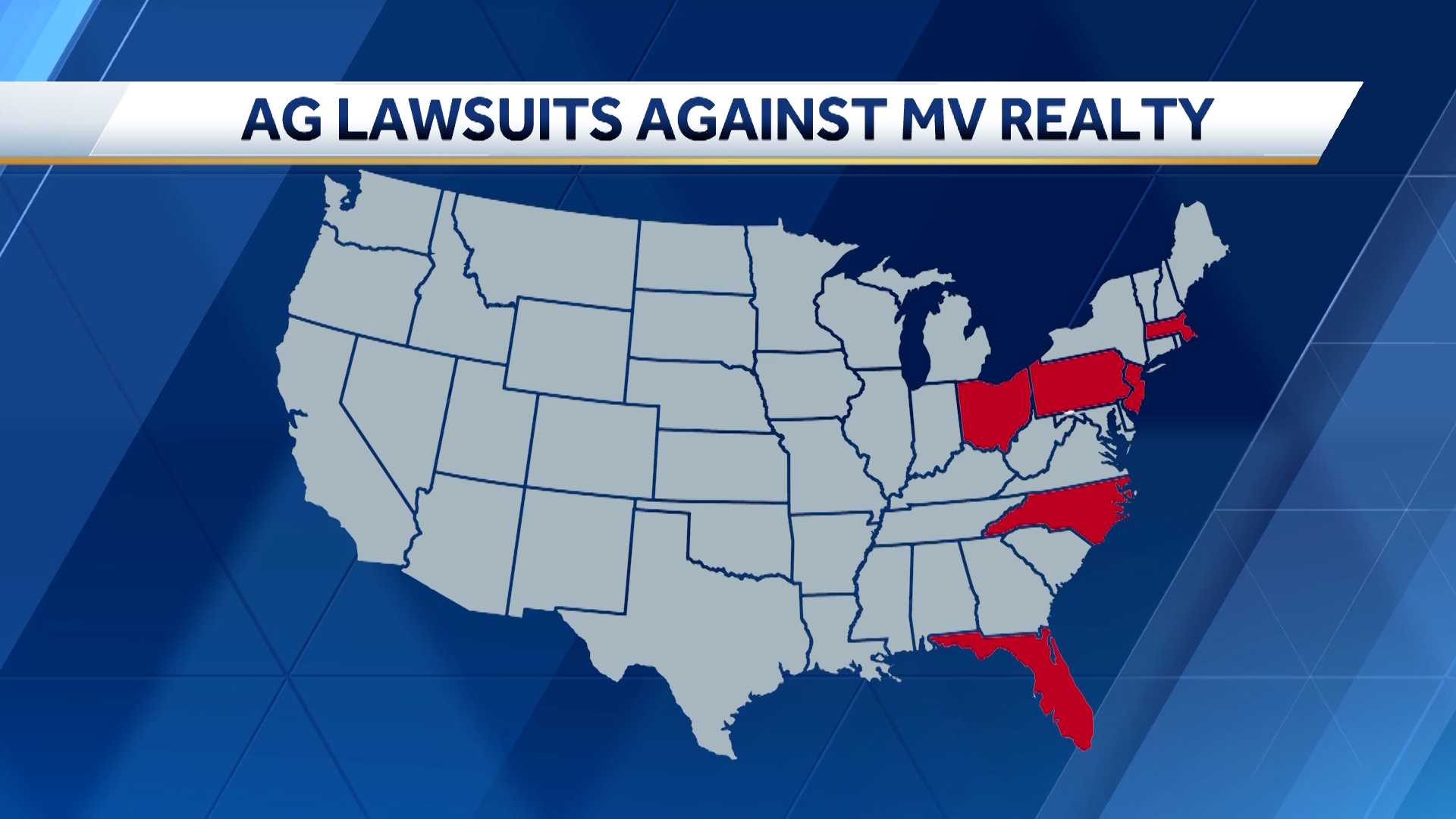Breaking - NAR Lawsuit - Fannie Mae Update In the dynamic world of…
What is the APR for a Mortgage
What is the APR for a Mortgage – Explained
If you’re in the process of obtaining a home loan, you may have come across the term APR. It stands for Annual Percentage Rate and is an essential aspect of mortgages that borrowers need to understand. The APR is a comprehensive representation of your loan’s total cost, including the interest rate, fees, and other charges.
The mortgage APR definition may seem overwhelming, but it’s crucial to understand how it works. It helps you compare different loan options and choose the one that best suits your financial needs. The mortgage APR calculation formula takes into account the loan’s interest rate, as well as any additional fees and charges, then expresses the result as a percentage.
Key Takeaways
- APR stands for Annual Percentage Rate
- The mortgage APR calculation formula includes the interest rate, fees, and charges
- Mortgage APR is important for comparing different loan options
- Understanding the APR can help you choose a loan that aligns with your financial goals
- Work with reputable lenders to find competitive APRs that save you money in the long run
Understanding Mortgage APR
When you start shopping for a mortgage, you’ll likely encounter the term Annual Percentage Rate (APR). Mortgage APR is a crucial factor to consider when comparing different loan options. It differs from the interest rate and takes into account all of the costs associated with the loan, including the interest rate, points, and lender fees.
While interest rates are essential when determining your monthly payment amount, mortgage APR provides a more accurate representation of the total cost of borrowing over the loan term. This figure is expressed as a percentage of the loan amount.
It’s vital to understand the difference between these two rates. A low-interest rate on a mortgage may seem like a great deal at first glance, but a higher APR may indicate additional costs that make it more expensive than a loan with a slightly higher interest rate and lower APR.
By understanding mortgage APR, you’ll be better equipped to select the loan that makes the most sense for your individual financial circumstances. When comparing mortgage options, be sure to focus on the APR.
Check out the table below for a quick summary of the difference between interest rate and APR on a mortgage:
| Interest Rate | APR |
|---|---|
| Only includes the interest charged on the loan | Includes interest, points, and lender fees |
| Only reflects your borrowing cost based on the interest rate | Provides a more complete picture of the total cost of borrowing |
| Helpful in determining your monthly payment amount | Highlights the total cost of the loan, giving you a clearer understanding of your investment |
Now that you have a better understanding of mortgage APR, continue to the next section to learn more about the key differences between mortgage APR and interest rate.
Mortgage APR vs Interest Rate
It’s essential to differentiate mortgage APR from the interest rate when choosing the right mortgage for your needs. The interest rate reflects the cost of borrowing expressed as a percentage of your loan principal. In contrast, the APR represents the annual cost of borrowing, including the interest rate, lender fees, and other expenses, expressed as a single rate.
When comparing different mortgages, use the APR as your primary metric, as it provides a more comprehensive picture of the loan’s overall cost. The interest rate, on the other hand, only reflects the cost of borrowing the loan principal and does not include other expenses.
So, what are the key differences between mortgage APR vs interest rate?
| Interest rate | APR |
|---|---|
| Reflects the cost of borrowing expressed as a percentage of your loan principal | Represents the annual cost of borrowing, including the interest rate, lender fees, and other expenses, expressed as a single rate. |
| Only considers the cost of the loan principal | Considers the cost of the loan principal, lender fees, closing costs, mortgage insurance, and other expenses |
| May increase over time if you have an adjustable-rate mortgage | Does not change over the life of your loan |
Mortgage APR comparison is crucial in understanding the actual cost of borrowing, and it allows you to make informed decisions when choosing a suitable mortgage. Knowing the difference between mortgage APR vs. interest rate can help you avoid costly mistakes and save you money in the long run.
How to Calculate Mortgage APR
Calculating the Annual Percentage Rate (APR) for your mortgage is an essential step in understanding the true cost of your home loan. Follow these simple steps to calculate your mortgage APR:
- Determine the loan amount you’re borrowing.
- Calculate the total interest you’ll pay over the loan term.
- Add any additional fees or closing costs associated with the loan to the total interest paid.
- Divide the resulting figure by the loan amount.
- Multiply the answer by 100 to get your mortgage APR.
Remember, the mortgage APR calculation formula is:
APR = [(Total Interest + Additional Fees) / Loan Amount] x 100
It’s crucial to note that varying factors, such as interest rate changes during the loan term or alterations in the loan amount, can all impact your APR. Always double-check your figures and consult with your lender to ensure the accuracy of your calculations.
Example Calculation
Suppose you’re borrowing a $300,000 mortgage loan with a 4% interest rate for a 30-year term. The additional fees associated with the loan amount to $7,000. Here’s how you would calculate the APR:
| Step | Calculation |
|---|---|
| 1. | $300,000 (Loan Amount) |
| 2. | $206,015 (Total Interest) |
| 3. | $7,000 (Additional Fees) + $206,015 = $213,015 |
| 4. | $213,015 / $300,000 = 0.71 |
| 5. | 0.71 x 100 = 71 (Mortgage APR) |
In this scenario, your mortgage APR is 71%, signifying that you’re paying an additional 3% of the loan amount beyond the initial interest rate due to the associated fees. Understanding your mortgage APR can help you assess the total cost of borrowing and make informed decisions about your home loan.
The Impact of Mortgage APR on Your Home Loan
When obtaining a home loan, one of the most crucial factors to consider is the Annual Percentage Rate (APR). The APR represents the total cost of the loan, including the interest rate and any other fees charged by the lender. It is important to note that a higher APR can significantly increase the overall borrowing costs, which can be detrimental if you are on a tight budget.
By understanding the mortgage APR definition and calculation formula, you can make informed decisions when choosing your home loan. To calculate your APR, you must consider not only the interest rate but also any additional lender fees, which can significantly impact the total cost of borrowing.
For example, suppose you are comparing two loans with different interest rates and fees. In that case, a closer examination of the APR will provide a more accurate representation of the total costs and allow you to make an informed decision that aligns with your financial goals.
It’s crucial to consider the impact of mortgage APR on your home loan because even a small fraction of a percentage can have a significant impact on your monthly payments and the total amount you’ll repay. Therefore, it’s essential to shop around, compare different mortgage options, and work with reputable lenders like Company 719 Lending to find the best deal.
Mortgage APR Calculation Example
Calculating the APR for your mortgage loan may seem daunting, but it’s relatively straightforward. To illustrate the process, we’ll use a hypothetical example:
Suppose you’re purchasing a new home for $250,000 with a 20% down payment of $50,000. You’re borrowing $200,000 at a fixed interest rate of 4.25% for 30 years. There are $4,000 in total costs associated with obtaining the loan.
Using the mortgage APR calculation formula, we can determine the annual percentage rate:
| Description | Amount |
|---|---|
| Loan amount | $200,000 |
| Interest rate | 4.25% |
| Total loan costs | $4,000 |
| Duration of the loan | 30 years |
To calculate the mortgage APR, first, determine the monthly payment:
Monthly Payment = P * r / ( 1 – ( 1 + r ) ^(-n) )
Where:
- P = Loan amount – Total loan costs
- r = Interest rate / 12
- n = Total number of payments or loan duration in months
Plugging in the values from our example:
Monthly Payment = 180651.46 * 0.00354 / (1 – (1 + 0.00354) ^(-360)) = $887.49
Next, calculate the total payments over the life of the loan:
Total Payments = Monthly Payment * n = $319,496.94
Finally, we can calculate the mortgage APR:
Mortgage APR = 2 * [ (Fees + Monthly Payment / 2) / Loan Amount ] * 12 * 100%
Plugging in the numbers from our example:
Mortgage APR = 2 * [($4,000 + $887.49 / 2) / $200,000] * 12 * 100% = 4.475%
Therefore, in this scenario, the mortgage APR is 4.475%, which takes into account the total cost of the loan. This example highlights the importance of understanding the APR when comparing mortgage options to determine the best fit for your unique needs.
Importance of Comparing Mortgage APRs
When seeking a home loan, many borrowers focus solely on the interest rate. However, it’s important to consider the Annual Percentage Rate (APR) as well. The mortgage APR represents the total cost of borrowing, including both interest and fees, and can vary significantly between lenders.
By comparing mortgage APRs from different lenders, you can identify the most cost-effective loan for your unique needs, potentially saving you thousands of dollars over the life of your mortgage.
It’s also essential to understand the difference between mortgage APR and interest rate. While the interest rate only reflects the cost of borrowing, the APR encompasses additional fees, such as closing costs and mortgage insurance.
Keep in mind that the lowest interest rate does not necessarily equate to the lowest overall cost. Even a small difference in APR can have a significant impact on your total borrowing costs, making it essential to compare mortgage APRs carefully.
To help you navigate the complex world of mortgage lending, Company 719 Lending offers a wealth of resources, including access to competitive mortgage APRs from trusted lenders. Their experienced team can guide you through the mortgage process, ensuring you secure the best mortgage for your needs.
Choosing the Right Mortgage Based on APR
When it comes to getting a mortgage, the APR is a critical factor to consider. As we’ve previously discussed, the APR helps you understand the overall cost of a loan, including both the interest rate and other fees. However, when comparing loans, it can be tough to determine which one is the right choice for you.
Here are some factors to keep in mind when comparing mortgage APRs:
- Loan Type: Different mortgage products offer varying interest rates, fees, and APRs. For example, an adjustable-rate mortgage may have a lower interest rate upfront, but the rates can increase over time. In contrast, a fixed-rate mortgage may have a slightly higher APR, but it provides more consistency and predictability in your payments. Consider your lifestyle and financial goals to choose the right loan type for you.
- Loan Terms: The length of your mortgage can also affect your APR. Generally, shorter-term mortgages (such as 15-year loans) have lower interest rates and APRs, but higher monthly payments. Longer-term mortgages (such as 30-year loans) have higher interest rates and APRs, but more manageable monthly payments. Consider your budget and future plans when deciding on loan terms.
- Closing Costs: Lenders can charge various fees to process and close a mortgage, such as appraisal fees, credit report fees, and loan origination fees. These fees can significantly impact your APR, so make sure to ask for a detailed breakdown of all costs associated with your mortgage.
By carefully comparing mortgage APRs and taking into account these factors, you can make an informed decision when choosing the right loan for your needs. Always make sure to work with reputable lenders like Company 719 Lending and take advantage of their expertise in finding competitive APRs.
Finding Competitive APRs with Company 719 Lending
If you’re in the market for a mortgage, it’s important to find a lender that offers competitive APRs. That’s where Company 719 Lending comes in! With years of experience in the industry, they can help you secure a loan with favorable terms that fit your financial goals.
One of the biggest advantages of working with Company 719 Lending is their team of experienced professionals. They know the industry inside and out and can guide you through the entire process, from pre-qualification to closing. Their goal is to make things as easy as possible for you, so you can focus on finding the home of your dreams.
But why choose Company 719 Lending over other lenders? Well, for one, they’re known for their competitive rates. Plus, they offer a wide range of loan options, from conventional mortgages to jumbo loans and everything in between. They even have options for first-time homebuyers and those with less-than-perfect credit.
Another advantage of working with Company 719 Lending is their commitment to transparency. They’ll explain all the terms and fees associated with your loan upfront, so there are no surprises down the road. And if you have any questions or concerns, their team is always available to help.
When it comes down to it, finding the right mortgage is all about finding the right lender. With Company 719 Lending, you’ll have a partner who’s dedicated to helping you achieve your goals, and who will work tirelessly to make sure you get the best possible deal.
Conclusion
Understanding what the APR for a mortgage is can make all the difference in securing the best home loan for you. With its importance established and how it differs from the Interest Rate, choosing the right mortgage is all about understanding the APR. Ensure to compare different APRs, consider other factors when choosing a loan, and work with reputable lenders like Company 719 Lending. Doing so can save you money in the long run and make the home of your dreams a reality.
FAQ
What is the APR for a Mortgage?
The Annual Percentage Rate (APR) for a mortgage is a measure of the total cost of borrowing, including both the interest rate and additional fees and charges associated with the loan. It provides a more comprehensive picture of the loan’s cost compared to just the interest rate.
How is the Mortgage APR calculated?
Mortgage APR is calculated using a specific formula that takes into account the loan amount, interest rate, and fees associated with the loan. The formula considers the timing and amount of each payment to determine the true cost of borrowing over the loan’s term.
What is the difference between Mortgage APR and Interest Rate?
The mortgage interest rate is the cost of borrowing expressed as a percentage, while the mortgage APR includes both the interest rate and other costs associated with the loan, such as closing costs and origination fees. The APR provides a more accurate measure of the loan’s cost.
How can I calculate the Mortgage APR?
Calculating the Mortgage APR can be complex, but there are online calculators and mortgage APR calculation formulas available. The formula takes into account the loan amount, interest rate, and fees associated with the loan, allowing borrowers to determine the true cost of borrowing.
How does Mortgage APR impact my home loan?
The Mortgage APR impacts your home loan by affecting the overall cost of borrowing. A higher APR means higher borrowing costs, including interest paid over the loan’s term and fees associated with the loan. It’s important to consider the APR when comparing different mortgage options to find the most cost-effective loan.
Can you provide an example of Mortgage APR calculation?
Sure! Let’s say you have a mortgage loan with a principal amount of $200,000, an interest rate of 4%, and upfront costs of $5,000. Over a 30-year term, the monthly payment would be $954.83. Using the Mortgage APR formula, the calculated APR would be approximately 4.17%. This example demonstrates how the APR accounts for both the interest rate and upfront costs.
Why is it important to compare Mortgage APRs?
Comparing Mortgage APRs is crucial because it allows borrowers to understand the true cost of different loan options. By comparing APRs, borrowers can identify the most cost-effective loan, saving money over the loan’s term. It’s vital to consider both the interest rate and additional fees when comparing APRs to make an informed decision.
How can I choose the right mortgage based on APR?
To choose the right mortgage based on APR, it’s important to consider your financial goals and individual circumstances. Compare mortgage APRs from different lenders, analyze the loan terms and conditions, and assess the total cost of each option. Working with reputable lenders, like Company 719 Lending, can also help guide you in selecting the best mortgage for your needs.
How can Company 719 Lending help me find competitive APRs?
Company 719 Lending is dedicated to helping borrowers find competitive mortgage APRs. With their experienced team, they can assist you in navigating the loan market, comparing APRs from different lenders, and identifying favorable terms. By working with Company 719 Lending, you can access their expertise and resources to secure a mortgage with competitive APRs.




